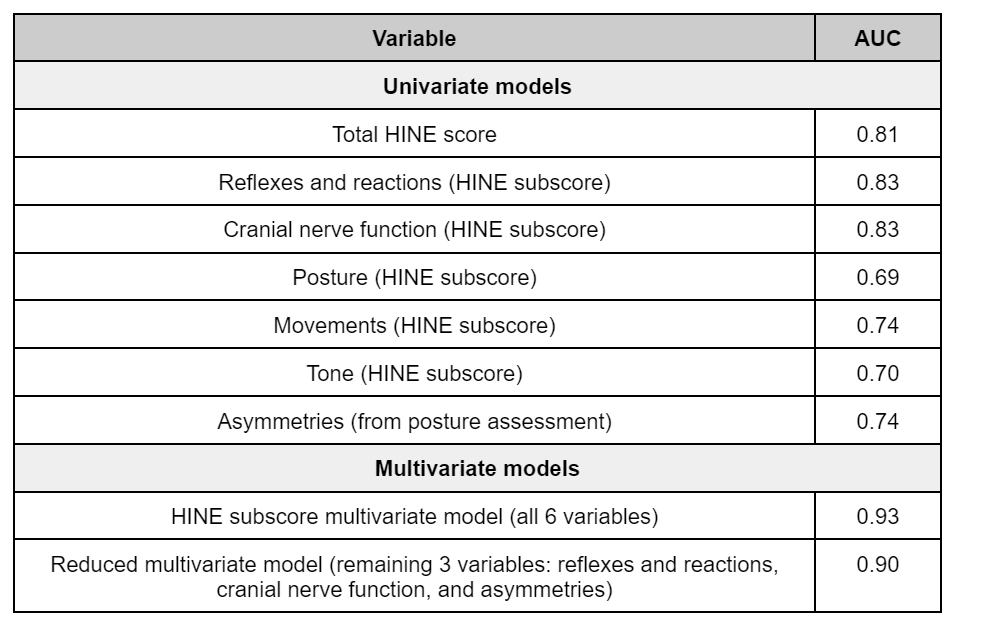Neonatal Follow-up
NICU Follow Up and Neurodevelopment 1: Developmental and Sensory Disorders
195 - Utility of Hammersmith Infant Neurological Examination (HINE) Subscores in Predicting Cerebral Palsy.
Publication Number: 195.142

Namarta Kapil, MS (she/her/hers)
PhD Candidate
University of Arkansas for Medical Sciences
North Little Rock, Arkansas, United States
Presenting Author(s)
Background: The Hammersmith infant neurological examination (HINE) is a standardized neurological examination for infants 2-24 months of age. It consists of 26 items (5 subscores) that assess different aspects of the neurological examination, specifically “cranial nerve function”, “posture”, “movements”, “tone”, and “reflexes and reactions”. The total score is the unweighted sum of the subscores. Asymmetries are noted during the posture assessment. The HINE identifies early signs of cerebral palsy (CP) and other neuromotor disorders. Although the HINE as a whole is predictive of later motor outcomes, we hypothesize that some HINE subscores are more predictive of CP than others. For example, persistent primitive reflexes are consistent with CP diagnosis, so we hypothesize that the “reflexes and reactions” subscore is highly predictive of CP.
Objective: To determine which HINE subscores are most predictive of future CP diagnosis.
Design/Methods:
As part of a larger study, in a cohort of high-risk former NICU infants, a trained pediatric neurologist performed the HINE when the infants were 3-4 months of corrected age. Using R-Studio, we performed univariate and multivariate logistic regression analyses to create Receiver Operator Characteristic (ROC) curves and yield the accuracy of the total HINE scores and subscores in classifying infants with and without CP.
Results:
108 infants were evaluated in the NICU at 3-4 months of corrected age. Of the 108,10 were lost to follow-up and 98 were re-evaluated after 2 years of age to determine their neurodevelopmental outcome. We used EPIC chart review, Bayley Scales-IV, and Ages and Stages Questionnaire (ASQ-3) to help determine CP diagnosis. 17 patients were determined to have CP, and the remaining 81 were designated as controls. Using equally weighted subscores, the total HINE score yielded an AUC = 0.81 (Table and Fig). The best individual predictors of CP were “cranial nerve function” and “reflexes and reactions” (AUC = 0.83). The reduced multivariate model using “cranial nerve function”, “reflexes and reactions”, and “asymmetries” yielded an AUC = 0.90, which is more predictive of CP than the original unweighted total HINE score. HINE as a whole is predictive of CP; however, certain HINE subscores, individually and when used in combination, outperform the HINE total score when predicting CP. We recommend that clinicians pay more attention to “cranial nerve function”, “reflexes and reactions” and any noted asymmetries when determining CP risk in high-risk infants.
Conclusion(s): 
.png)
